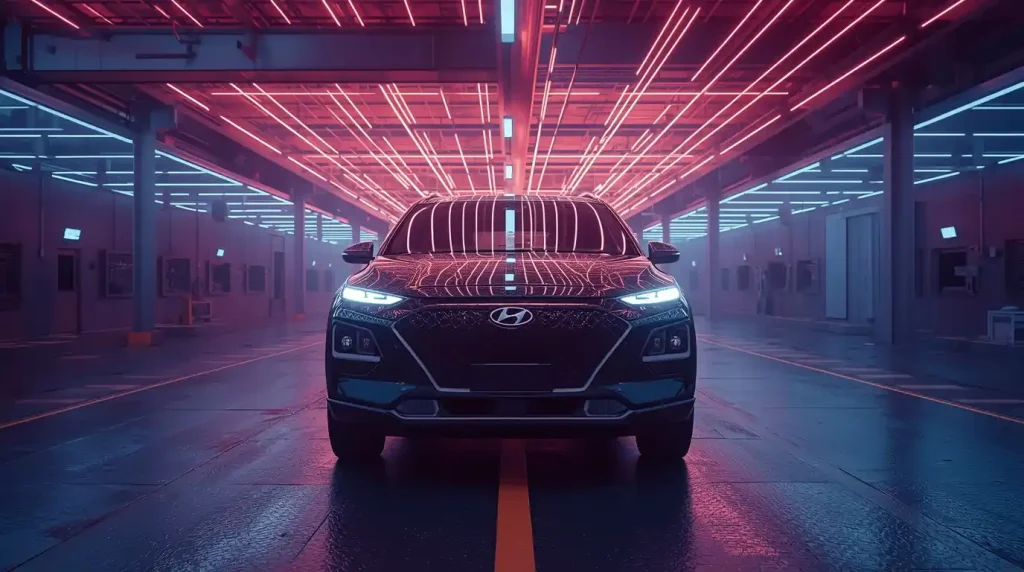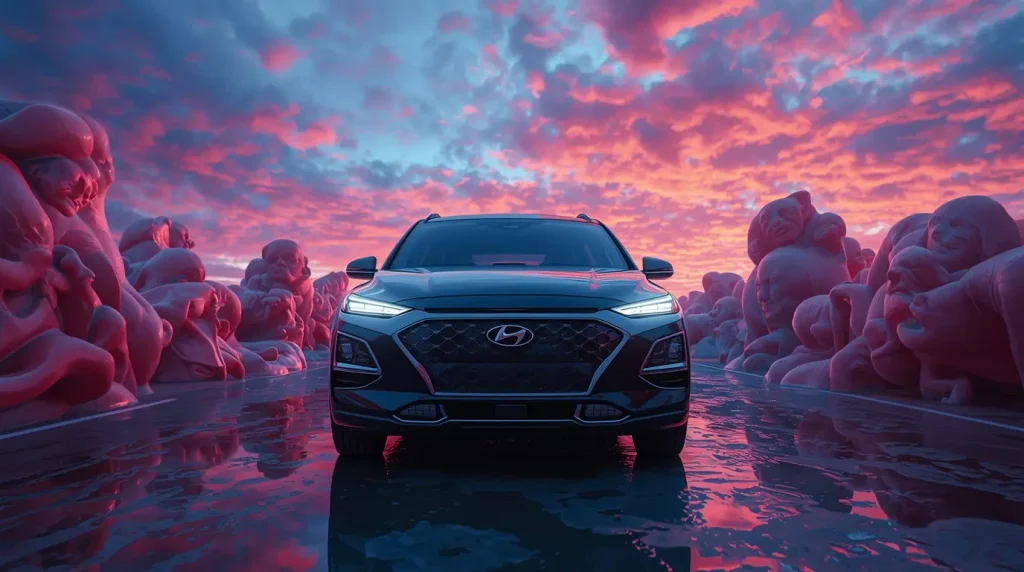5 Ambitious Ways Hyundai is Doubling Down on American Growth After a Major Setback

Hyundai
It’s been a rollercoaster few weeks for Hyundai in America. One day, the news cycle is dominated by a negative event: a federal immigration raid at a subsidiary’s battery plant. The next, the company is making a massive, positive announcement about its future.
This contrast is the story of modern global manufacturing. It’s complex, fraught with challenges, but ultimately driven by long-term vision.
This article dives deep into Hyundai’s ambitious U.S. growth plans, announced at their 2025 Investor Day. We’ll explore the five key pillars of their strategy, understand the context of their recent challenges, and analyze what this means for the American consumer, job market, and the future of electric vehicles.
Forget the simple headlines. This is the full, human story of a corporate giant navigating the path to an American electric future.
Pillar 1: The Electrified Onslaught – A New Model for Nearly Every Driver
Hyundai isn’t just dipping its toes into the electric vehicle market; it’s launching a full-scale invasion. The cornerstone of their $5.5 billion pledge is an unprecedented expansion of their EV lineup.
This isn’t merely about selling more cars; it’s about offering the right car for every need, budget, and lifestyle.
The plan is to launch at least five new electric models specifically designed for the U.S. market by the end of the decade. This expands upon their current portfolio, which includes the popular IONIQ 5 and IONIQ 6. We can expect to see everything from a rugged electric SUV to compete with the likes of the Rivian R5 and Tesla Model Y, to a more affordable compact crossover aimed at mainstream America.
The strategy is brilliant in its simplicity. By covering multiple segments—sedans, SUVs, and potentially even pickup trucks—Hyundai creates a comprehensive “electric ecosystem.” A family might start with an IONIQ 5, then add a larger three-row SUV for road trips, cementing their loyalty to the brand.
This product blitz is designed to capture market share at a critical time when many consumers are still making their first switch from gasoline to electric. Hyundai aims to be the brand they choose.
Pillar 2: Building a Fortress – The $5.5 Billion Bet on American Soil
A product is only as good as the system that builds and supports it. Hyundai understands this better than anyone, which is why a huge portion of their investment is focused on localizing production. This is a direct and strategic response to the new realities of the U.S. Inflation Reduction Act (IRA).

The IRA’s EV tax credit rules have fundamentally reshaped the game. To win, you must build here.
Hyundai’s massive financial commitment is going towards fortifying its American manufacturing footprint. This includes:
- Expanding existing assembly plants in Alabama (Montgomery) and Georgia (new Metaplant America).
- Building new facilities for battery production through strategic partnerships with giants like SK On.
- On-shoring supply chains for critical components, moving away from overseas dependencies.
This “localization” strategy does several things. It secures those crucial $7,500 federal tax credits for their customers, making their EVs instantly more affordable and competitive against domestic brands. It also insulates the company from global supply chain shocks, tariffs, and logistical nightmares, as seen during the pandemic.
Most importantly, it sends a powerful message: “We are all in on America.” This builds goodwill, creates jobs, and embeds Hyundai deeply into the U.S. industrial fabric.
Pillar 3: The Smart Money is on Software – Beyond the Metal
The cars of tomorrow are not defined by their horsepower but by their processing power. Hyundai’s investor day made it clear that they are pivoting from a hardware company that makes cars to a software company that enables mobility.
The goal is to generate recurring revenue through software subscriptions and connected services, creating a continuous relationship with the customer long after the initial sale.
This includes advanced features like:
- Over-the-Air (OTA) Updates: The ability to upgrade a car’s performance, infotainment, and safety features remotely, much like updating a smartphone.
- Subscription Services: Everything from enhanced autonomous driving capabilities (like Hyundai’s Highway Driving Pilot) to premium connected navigation and entertainment packages.
- Data-Driven Insights: Using anonymized data from millions of connected vehicles to improve future designs, predict maintenance needs, and offer personalized services.
This focus on software and subscription models represents a fundamental shift in the automotive business model. It promises higher profit margins and a more predictable revenue stream, making the company incredibly attractive to investors looking at long-term growth.
Pillar 4: Tackling the Elephant in the Room – Supply Chain and Labor
You cannot discuss Hyundai’s recent U.S. ambitions without addressing the recent immigration raid at a plant operated by SMART Alabama, LLC, a key supplier for Hyundai. While not directly operated by Hyundai Motor Manufacturing Alabama, the incident cast a shadow and highlighted the immense complexities and pressures of building a localized supply chain at breakneck speed.
The raid was a stark reminder that ambitious growth must be built on a foundation of ethical and compliant practices.
In their investor presentation, Hyundai didn’t shy away from this context. Instead, they framed their massive investment as part of the solution. By on-shoring production and building state-of-the-art, company-owned or closely partnered battery and component plants, they can exert greater control and enforce stricter standards over their entire supply chain.
This involves creating thousands of new, high-quality jobs in construction, advanced manufacturing, and engineering. These are roles that will likely be filled through robust, legal hiring processes, aiming to transform a narrative of compliance issues into one of job creation and economic opportunity. It’s a strategic move to mitigate risk, ensure stability, and rebuild trust with regulators and the public.

Pillar 5: Winning the Hearts and Minds – A Marketing Masterstroke
The final pillar of Hyundai’s plan is perhaps the most subtle but equally critical: mastering the marketing. The EV market is becoming crowded. Consumers are bombarded with choices from legacy automakers and new startups alike.
Hyundai’s challenge is to cut through the noise and solidify its brand not as a value alternative, but as a leading tech-forward innovator.
Their strategy appears to be multi-faceted. First, they will leverage their proven design prowess. Cars like the IONIQ 5 have won nearly every global design award, giving them a “cool factor” that competitors envy. They will double down on this, making design a key differentiator.
Second, they will hammer home their technological advantages, particularly in areas like ultra-fast charging (using 800-volt architecture) and advanced driver-assistance systems. The message will be that Hyundai doesn’t just make electric cars; it makes better, more advanced electric cars.
Finally, they will use their new American manufacturing story as a powerful marketing tool. “Built in America” resonates deeply with a large segment of U.S. consumers. By combining patriotic messaging with cutting-edge technology and stunning design, Hyundai is crafting a compelling narrative to win the hearts, minds, and wallets of American drivers.
Conclusion: A Calculated Gambit for American Dominance
Hyundai’s investor day was more than a financial presentation; it was a declaration of intent. In the face of adversity and intense competition, the company has laid out a clear, bold, and expensive path forward.
They are addressing their challenges head-on, using a compliance issue as a catalyst to build a more robust, ethical, and domestic supply chain. They are leveraging macro-economic policy (the IRA) not as a hurdle, but as a springboard to secure their competitive edge. And they are betting big on the idea that American consumers want a diverse range of well-designed, software-driven electric vehicles built right here at home.
The road ahead is long and fraught with challenges. Tesla remains a formidable opponent, legacy Detroit automakers are awakening, and new entrants are always around the corner. But with this $5.5 billion masterplan, Hyundai has made one thing abundantly clear: they are not just participating in the American auto industry’s electric future. They intend to help lead it.

Table of Contents
Reference Website:
https://www.cnbc.com/2025/09/18/2025-hyundai-investor-event.html
Our Related News Website:
Sports: Sport Flash
World News: The News Grid
Environment News: Eco Alert
Business News: Biz Trend Now
Dailt News: Unbiased Daily
Realm News: Real Time Realm
Retrun to our Homepage





